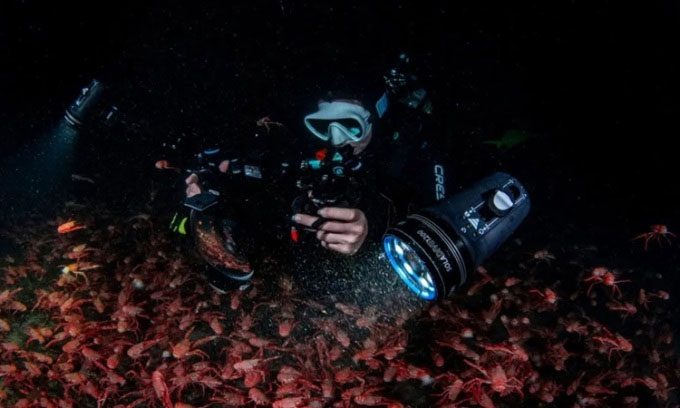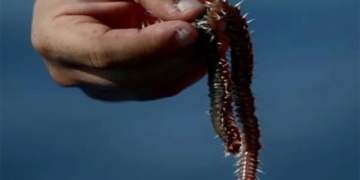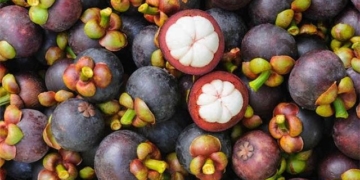Scuba divers and marine biologists encountered a stunning sight of yellowfin crabs stacked on top of each other at the ocean floor near San Diego, swept in by currents close to shore.
When Anna Sagatov, an underwater filmmaker, conducted a night dive off La Jolla Shores in San Diego at the end of April, she witnessed an unexpected scene. The ocean floor was transformed into a red carpet of crabs piled upon one another. Swirling and shifting with the currents, the crab mass extended beyond the reach of the dive lights, according to Sagatov. The red crabs she and many others observed off the coast of San Diego are yellowfin crabs, as reported by Info Club.

Anna Sagatov photographed beside a mass of yellowfin crabs at a depth of over 18 meters below the sea surface. (Photo: Anna Sagatov).
The shallow waters around Southern California are not a typical habitat for yellowfin crabs. They usually reside around Baja California, Mexico. However, this marks the second occurrence in six years that they have appeared in this area. Some experts speculate that they may have been pushed towards the canyon near San Diego by nutrient-rich currents stemming from El Niño, as warming oceans release more heat into the atmosphere, creating unstable currents and pressure fluctuations in the equatorial Pacific Ocean. This event could signal changes in the region’s climate. Simultaneously, the gathering of yellowfin crabs provides scientists and divers like Sagatov with close-up images of marine creatures that often end up in the bellies of larger fish.
Sagatov observed cannibalistic behavior among the crabs. Although yellowfin crabs primarily feed on plankton, they are also opportunistic predators at the end of their life cycle, willing to consume their kind.
Yellowfin crabs are more closely related to hermit crabs than true crabs, despite evolving similar characteristics. Their name derives from their status as a favored food source for large fish like yellowfin tuna. At the end of their life cycle, yellowfin crabs live just above the continental shelf, becoming bottom-feeding scavengers. During this phase, they often move through the water column in search of plankton, making them susceptible to being swept north by winds, tides, and currents. At the Scripps Canyon seafloor, yellowfin crabs pile on top of each other in masses reaching thousands. For local predators, this represents a bonanza.
This year’s gathering of yellowfin crabs and the one in 2018 remain a scientific mystery, according to Megan Cimino, a research assistant at the Institute of Marine Sciences at the University of California, Santa Cruz. When yellowfin crabs last appeared, her research team noted that their movements in California were linked to unusually strong ocean currents originating from Baja, but not always coinciding with El Niño. According to her, the new event signals “something different is happening in the ocean.” While the relationship between the yellowfin crab population and El Niño is not yet clearly defined, climate change may lead to more significant shifts in ocean conditions.
Due to the cold waters in the Scripps Canyon, yellowfin crabs will not survive long after arriving in San Diego. Mass die-offs will lead to stranding events, where their carcasses wash ashore, staining the sand and surrounding waters red. Alternatively, the same current could return the crabs back to the open sea.




















































